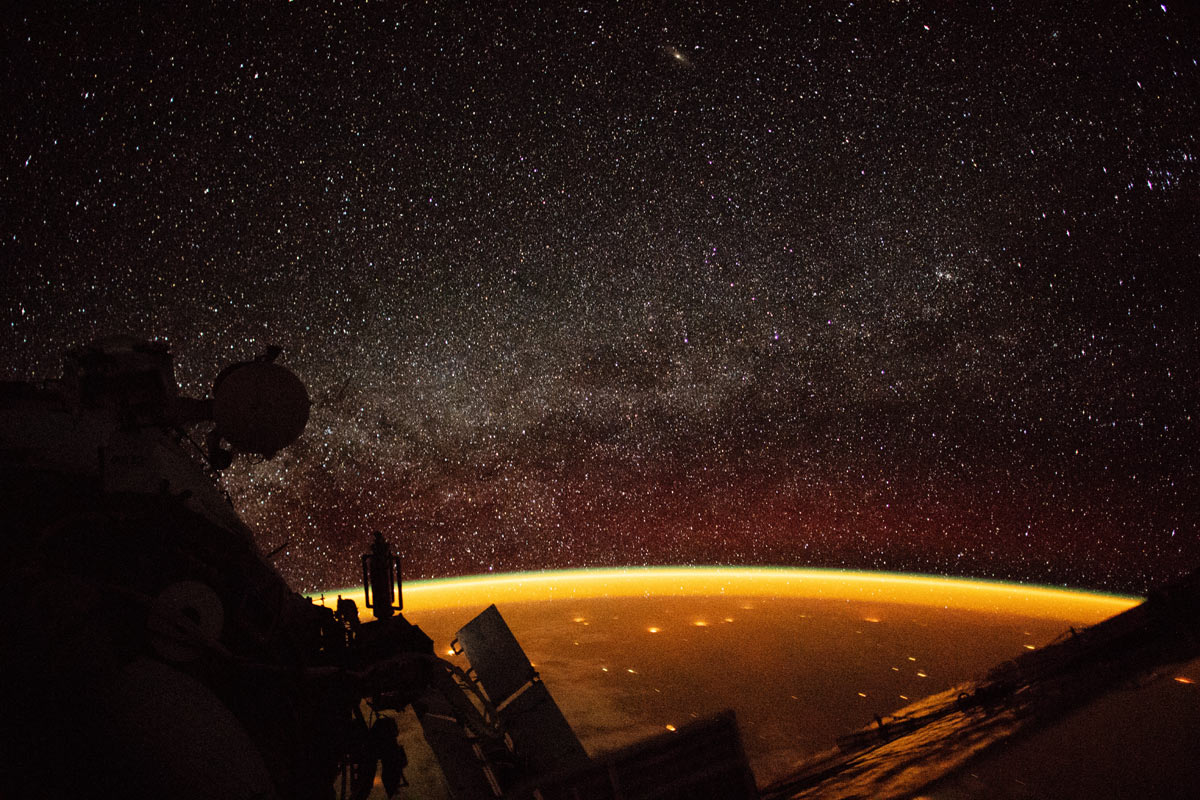Earth Awash in Lights of the Night

As nighttime arrives, previously obscured light sources begin to dazzle the eye. City lights sprawl across Earth’s surface. A constant glow hovers in the upper atmosphere. Beyond Earth, starlight fills in the darkness of the cosmos.
From the vantage point of space, we can get a unique view of each of these nighttime spectacles. On October 7, 2018, an astronaut aboard the International Space Station (ISS) shot this photograph while orbiting at an altitude of more than 400 kilometers (250 miles) over Australia. In this view, stars appear more numerous along the image center, where the plane of our disk-shaped Milky Way galaxy extends into space.
The oranges (above) and greens (in the video below) enveloping Earth are known as airglow—diffuse bands of light that stretch 50 to 400 miles into our atmosphere. The phenomenon typically occurs when molecules (mostly nitrogen and oxygen) are energized by ultraviolet (UV) radiation from sunlight. To release that energy, atoms in the lower atmosphere bump into each other and lose energy in the collision. But the upper atmosphere is thinner, so atoms are less likely to collide. Instead they release their energy by emitting photons. The result is colorful airglow. [leggi tutto]